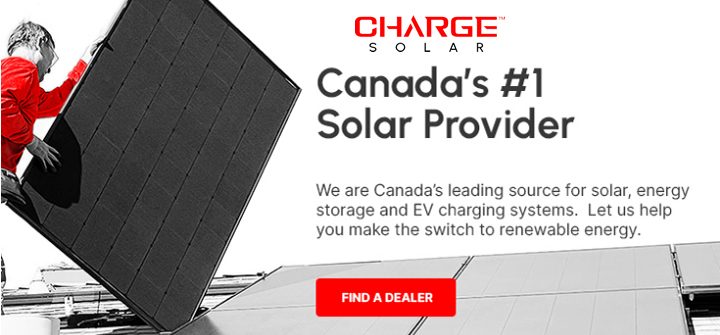The setup would consist of a 24ft canvas geodesic dome, an outdoor kitchen, a separate enclosed bathroom, and a utility trailer with solar panels mounted on the roof and all the required electrical inside.
 Case Study - Outfitting an Off-Grid Canvas Geodesic Dome - Part 1
Case Study - Outfitting an Off-Grid Canvas Geodesic Dome - Part 1

Luke Hetherington | AltEnergyMag
View Part 2 of the Series Here:
It was November 2020, nine months into the pandemic. I had been isolating in my apartment in Victoria, British Columbia, Canada. It was a nice apartment but it was a pre-1900 brick building with low roofs and low light. It was getting imposing and the city of Victoria, the city I grew up in, had a sadness to it... a tourist town with no tourists.
My brother had a hobby farm in a small town up island and I went to visit and stay for a bit.
While enjoying farm life I started to think about looking into alternative living options. Everything was on the table.... everything except anything outside of Canada.
I looked at buying land on a remote island with only boat access... but the last time I drove a boat it was pedal powered and shaped like a swan. I thought about living in a converted van but province to province travel was being restricted. I settled on off the grid living.
By accident I found a chunk of indeginous land in Duncan that was being leased from the tribe by an elderly couple that had been in the construction industry all their lives. They rented lots month by month to people interested in building off the grid. The only catch was that whatever you built had to be moveable. The site had a couple dozen people living there. Tiny homes, converted fifth wheels, converted shipping crates and there was a yurt.
Knowing that it had to be moveable I decided on this:
The setup would consist of a 24ft canvas geodesic dome (sold by a Oregon company Pacific Domes), an outdoor kitchen, a separate enclosed bathroom, and a utility trailer with solar panels mounted on the roof and all the required electrical inside.
There are many DIY ways to piece together a small installation solar but since my knowledge of solar requirements is limited, I wanted to work with a wholesaler in my area. Ed Knaggs over at Charge Solar came to the rescue and we worked together to design a realistic system for my needs.
We communicated over Zoom to go through what my energy needs would be and what was realistic.
During the first meeting we discussed the basic components of an off-the grid solar setup and he used the screen sharing feature to show me diagrams of complete setups and an overview of each components purpose and how it was connected and wired. I’ll break down the components in my next article.
After the first meeting Ed sent over a PDF worksheet that I would use to calculate how many panels I would need and how many batteries.
You start by itemizing every appliance you plan to use and how many hours a week you think you will be using it. The worksheet Ed sent had an index on the last page for wattages of most appliances and items not on that list I looked up on google.
Once I had filled out my projected load, I quickly noticed two items that used up large amounts of energy.
The first was a desktop computer. Since my work involves using a 3D programs, I need a high-end computer with a discreet GPU. I’m probably in the minority with this requirement but the other big energy suck, the on-demand water heater, is something everyone needs. You’ll quickly learn that anything that quickly creates heat from electricity is a horror. Drip coffee makers, blow dryers, flat iron, clothes dryer, electric stove… all horrors.
Even though an electrical on-demand water heater only turns on and off while the water is on it’s still an energy hog. I was planning on having propane for cooking so I knew I might be able to use a propane on-demand heater if my complete electrical load was too much. Ed mentioned that figuring out my ideal off-grid solar setup would require several revisions so I continued on with calculating.
I have my “Total average Load Watt hours per day” and used that to calculate how many batteries I would need:
44 batteries!
My build location is on the south part of Vancouver Island. During winter we can easily get four days of cloudy skies with constant rain. That means I would need four times the batteries because I would be drawing the same energy everyday but wouldn’t be replenishing them with solar because of the cloud cover. I quickly realized that for the winter months a gas generator would be required to replenish the batteries on days I get no sun.
I decided to take a second pass at Ed’s worksheet with some changes to the electrical load and with just 1.5 days worth of batteries. I removed the electrical on-demand heater with a propane one.
I got rid of the on-demand heater and reduced the numbers on a few other things to get my “Total average Load Watt hours per day” to about half it was when I first tried.
Then I changed “Maximum number of continuous cloudy days expected in your area or number of days you would like to run without using your generator.” to one. Knowing that my generator will pick up the slack.
From 44 batteries to 4! Much more realistic.
The final part of the worksheet is figuring out how many solar panels you’ll need. I will be using 425W panels.
Ed provided a sun hours per day chart for Victoria. For the worksheet I used January which only get 1.84 hours of sunlight a day. In these low sun months I’ll be supplementing the solar with a gas generator so I hopefully don’t need 12 panels since I’m limited in space and I’ll have the generator to supplement my battery charging. I’ll be mounting the panels to the top of a 16ft utility trailer.
I sent the completed worksheet over to Ed. In the next chapter I’ll discuss the solar package Ed suggested and what each components does.
Charge Solar’s mission is to accelerate Canada’s Clean Energy Transition by leading the solar and storage industry. We use our knowledge base and market-leading solar and storage equipment to provide quality energy solutions for residential, commercial, and industrial applications. Charge Solar strives to provide customers with systems that are reliable, safe, and durable. We are the largest solar distribution and engineering services company in Canada, stocking leading brands across the country in Victoria, Vancouver, Edmonton, Calgary, Toronto, Barrie, Montréal, & Halifax.
The content & opinions in this article are the author’s and do not necessarily represent the views of AltEnergyMag
Comments (0)
This post does not have any comments. Be the first to leave a comment below.
Featured Product



